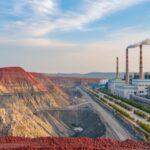In 2024, the global agricultural sector is undergoing profound changes. In this context, soybean cultivation, as an important part of agriculture, is showing new developments and trends . With the growing global demand for soybeans, increasing soybean production has become an important issue in the agricultural sector.Growing healthy, high-yield soybeans requires planning, good soil management, and careful attention to environmental factors throughout the growing season. Here’s a comprehensive guide on how to grow soybeans effectively.
Choose the Right Variety
Select a soybean variety that matches your region’s growing season, soil type, and climate. For example, early-maturing varieties are best in cooler regions, while later-maturing varieties work well in warmer climates. Choosing disease-resistant varieties can also reduce the risk of crop loss due to common soybean pests and diseases.
Prepare the Soil
Soybeans thrive in well-drained, fertile soils with a pH of 6.0 to 7.5. Soil Testing is crucial to determine nutrient levels and adjust pH. Applying lime to acidic soils can improve yield. Soybeans are nitrogen-fixing crops, so they generally need less nitrogen, but phosphorus and potassium are essential, especially in early growth stages.
Tillage: Light tilling helps break up compacted soil and control weeds, but no-till methods work well in established, low-weed fields and can help maintain soil structure.
Fertilization: Adding phosphorus and potassium during soil preparation promotes strong early growth and improves resistance to pests and diseases. Consult soil test results to determine precise fertilization needs.

Planting
Timing: Plant soybeans once soil temperatures consistently reach 55°F to 60°F (13-16°C), which typically occurs in late spring.
Depth and Spacing: Plant seeds about 1-1.5 inches deep and space rows 15-30 inches apart. For good airflow and disease control, maintain plant spacing that prevents crowding, typically 5-7 seeds per foot in a row.
Watering and Irrigation
Soybeans need consistent moisture, especially during flowering and pod-setting stages. Aim for around 1-1.5 inches of water per week, depending on rainfall. Too much water can harm root development and cause diseases, so avoid over-watering.
Weed Control
Weed competition can significantly reduce soybean yield, particularly in the early growth stages. Pre-emergent and post-emergent herbicides are commonly used, but crop rotation and cover crops are effective long-term strategies. Mechanical methods like shallow tilling also work well in fields without herbicides.
Pest and Disease Management
Soybeans can be affected by pests like aphids, bean leaf beetles, and diseases such as root rot and soybean rust. Regularly scout for pest and disease signs and use integrated pest management (IPM) strategies, such as rotating crops, using resistant varieties, and applying pesticides sparingly. Biocontrols and natural predators can also help in reducing pest populations.

Fertilization During Growth
During the growth period of soybean, it needs to absorb a variety of nutrients, including nitrogen, phosphorus, potassium, calcium, magnesium, sulfur and so on. Among them, nitrogen fertilizer is one of the important elements needed for soybean growth, which plays an important role in improving soybean yield and quality. In the process of soybean growth, it is necessary to apply the appropriate amount of nitrogen fertilizer, but excessive application of nitrogen fertilizer will lead to the futile growth of soybean plants, reduce the resistance to adversity, and affect the yield. Therefore, rational application of nitrogen fertilizer is the key to soybean fertilization.
In addition to nitrogen fertilizer, phosphorus fertilizer and potash are also important elements needed for soybean growth. Phosphorus fertilizer can promote the development of soybean roots and plant growth, improve resilience; potash fertilizer helps to enhance the ability of soybean plants to resist collapse and disease resistance. Therefore, in the soybean fertilization process, should be a reasonable mix of phosphorus and potash fertilizer application.
In addition, calcium, magnesium, sulfur and other trace elements also have a certain impact on soybean growth. In the soybean growth process, according to the soil nutrient status and plant growth, the appropriate amount of these trace elements to supplement the fertilizer.
In the process of soybean fertilization, the following points need to be noted:
Fertilization should be combined with irrigation. Irrigation should be carried out in time after fertilizer application to promote the absorption and utilization of nutrients.
Avoid over-fertilization. Over-fertilization will not only lead to waste of fertilizer, but also cause negative impacts on the soil and environment, and even lead to crop damage. Therefore, it is necessary to apply fertilizer according to the standard of fertilizer amount and avoid over-fertilization.
Harvest Timing
Harvest soybeans when pods are dry and beans reach a moisture level of 13-15%. Delaying too long can lead to shattering and seed loss. When harvesting, adjust your combine to avoid cracking and damaging the beans, which can reduce the quality of your yield.

Additional Tips
Crop Rotation: Soybeans grow well in rotation with corn or other grains, as rotation reduces pest and disease buildup in the soil.
Soil Conservation: Use practices like cover cropping and reduced tillage to maintain soil health and reduce erosion, which benefits long-term soybean productivity.
By following these guidelines and adjusting practices based on your specific location and conditions, you can maximize both the yield and quality of your soybean crop.












